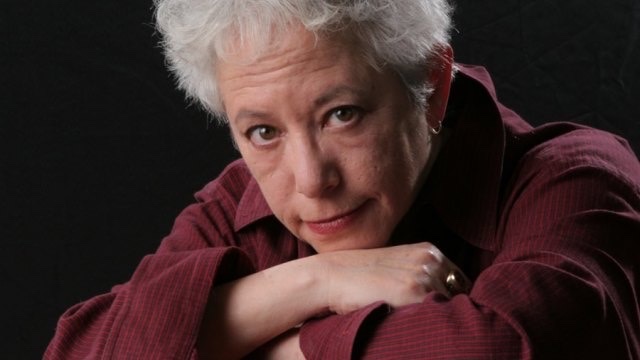I miss her. I’m talking about the recently demolished R and H hall grainstore on Cork’s South Docks. (Notice, I’ve gendered the building. Even though most vertically ambitious, skyscraping structures are considered male, R and H Hall has always seemed female to me – a big, blowsy mother ship.) No one could accuse her of being beautiful. Functional, maybe, but not beautiful. Built in the 1940s as a storehouse for grain feed, she has loomed over the docklands for over 80 years, most of them working, though in recent decades she’s been empty and heading towards dereliction. The demolition work started in January and it’s taken over four months to bring the mighty Amazon down.
Her giant silo towers stood at 33m (for comparison’s sake, the Elysian tower, Cork’s tallest building is 71m) and were made of concrete and steel. This mode of construction was celebrated at the time but for most people it’s the sheer size of R and H Hall that impressed – or repelled.
The National Built Heritage Service noted that, beyond its “utilitarian design”, the significance of the grain mills lay in its visibility from many parts of the city, its height and scale serving to define the commercial docks area of the city. (The National Heritage people considered her an “it”.)
Her monolithic presence stood like a large piece of industrial furniture declaring Cork as a working port city. (As well as the helpful sign, Port of Cork, on the island where the river splits.) But like the “You are Now Entering Free Derry” sign at the entrance to the Bogside, that distinctive R and H Hall logo marked a definitive border, a crossing into the People’s Republic of Cork.
The building has always split opinion. From an “abomination” to “majestic”. For some, it was an eyesore – though one Cork resident interviewed as the building was coming down conceded that “at least, it was our eyesore”. A child – with imaginative vision – saw it as Willy Wonka’s Chocolate Factory. Others thought it was “cool”, but it wasn’t clear whether they meant the building or the destruction of it.
The downing of R and H Hall was a slow business. Behind the high walls, the giraffe neck of a huge crane with toothed jaws crunched its way through the walls with what seemed like carnivorous glee. It seemed an oddly laborious way to get rid of the place, but in the end as a fan, it gave me a chance to get used to the idea that soon there would be a blue sky view when sitting having a drink in Goldbergs pub straight opposite.
I’d imagined at first that they might blow up the Old Lady of Kennedy Quay and I rather liked the idea of it being crushed in one explosive fell swoop. It’s not something you see every day, though in pre-September 11 America, the controlled demolition of buildings was often turned into a spectator event.
In Richard Ford’s novel The Lay of the Land, set in the year 2000, the aging hero Frank Bascombe and his buddies go on an expedition to watch the downing of an old hotel in Asbury Park on the New Jersey shore. In reality, the hotel still stands, but in the novel. Ford renames it and then tears it down by implosion.
“Black smoke gushes from what must be the hotel’s deepest subterranean underpinnings, her staunchest support. . .Her longitude lines, rows of square windows in previously perfect vertical alignment, all go wrinkled, as if the whole idea of the building had sustained, then sought to shrug off a profound insult. . and then rather simply, all the way down she comes, more like a brick curtain being lowered than like a proud old building being killed. Eighteen seconds is about it.”
I’m glad in the event, that R and H Hall went the slow way.
It gave admirers like me time to adjust to her loss, and a chance to glimpse her complicated innards and to marvel at just how ambitious a building she was. Not so marvellous for the residents of Park View, the terrace that sat for decades at her feet. For them she was a brooding shadow-maker, a greedy light-stealer.
One of the effects of urban clearance is that it creates a kind of amnesia. Who remembers what preceded the aforementioned Elysian? I saw that demolition happen and now I have to work really hard to imagine what it replaced. (A post office depot, and before that a rail terminus, by the way). Will I be struggling in years to come to remember R and H Hall? Somehow, I doubt it.
She has seared herself on my inward eye so I’m not likely to forget. I’m not the only one. The landmark building has appeared on posters and photographs. Currently, there’s an exhibition of images of her at the nearby Marina Market, where a number of visual artists are already commemorating the place almost as soon as the dust has settled.
The Silo Building which will replace the Hall grainstore will have the same footprint and will reflect the industrial characteristics of its predecessor, according to the developers of the site. Although the structure was not suitable or safe enough to repurpose, it is hoped that a sculptural piece will be installed on site using some of the rare grain-drying, conditioning machines and grain hoppers rescued from the demolition. The same goes for the trademark signage that was taken down and preserved. (Just like the Anglo-Irish Bank logo which now features as a social-historical artefact in the National Museum in Kilmainham, Dublin – though not with the same painful associations.)
But while these modernist, deconstructed nods to legacy are welcome, none of them make up for the original which lorded it (or is that ladied?) over the city in all her brutalist glory.
Did I mention that I miss her?
My most recent publication is in Cork Stories from Doire Press – 18 stories from and about Cork. https://www.doirepress.com/books/fiction/cork-stories


Photographs: Dan Linehan, Reddit and Colbert Kearney.









